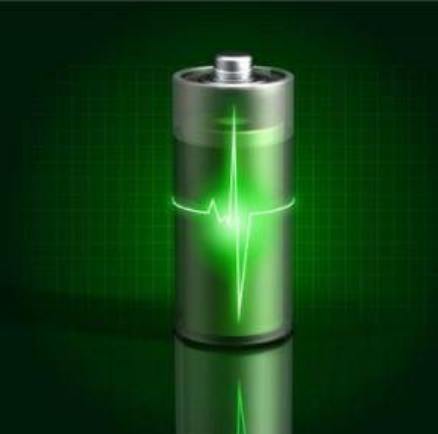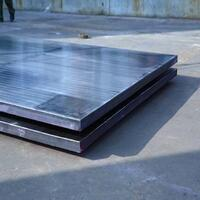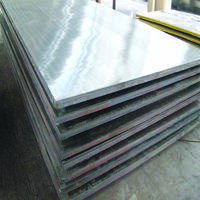1. Introduction
Just 24 hours ago, a major storm system swept across the Midwest, leaving dozens of metal clad buildings with damaged roofs and compromised wall panels. Homeowners reported leaks in their metal clad houses, while contractors scrambled to assess whether the issue stemmed from poor installation or material fatigue. This highlights a growing need for practical knowledge on maintaining and troubleshooting metal clad systems—whether it’s a corrugated steel facade, a zinc clad dormer, or aluminum clad pipe insulation.

Metal clad construction has surged in popularity thanks to its durability, modern aesthetics, and low maintenance. But like any building method, it comes with common pitfalls. In this guide, we’ll walk you through seven frequent problems—and how to solve them—using the right materials and techniques.
2. Rust and Corrosion on Metal Clad Walls
One of the top complaints with metal clad walls—especially those using mild steel plate or untreated carbon steel—is premature rust. This is especially true in coastal or high-humidity areas.
Solution: Start by removing loose rust with a wire brush or sandpaper. Apply a rust-inhibiting primer, then finish with a high-quality paint formulated for metal surfaces. For long-term protection, consider upgrading to clad metals like aluminum clad steel or stainless clad aluminum, which resist corrosion naturally. If you’re using corten steel siding, remember it’s designed to rust—but only in a controlled, protective layer. Never paint over it unless you understand the implications.
3. Leaks in Metal Clad Roofs
A leaking metal clad roof often traces back to improper flashing, poor seam sealing, or using the wrong panel type for your climate. Standing seam siding—like Colorbond standing seam or PAC Clad HWP—is generally more watertight than exposed-fastener systems.

Solution: Inspect seams, penetrations, and edges. Replace damaged gaskets or sealants. For new installations, opt for vertical standing seam metal siding with concealed fasteners. Ensure your roof has proper underlayment and ventilation—yes, even metal clad roofs need airflow to prevent condensation buildup underneath.
4. Poor Insulation and Energy Loss
Many assume metal clad buildings are inherently energy-efficient. But without proper metal clad insulation, heat transfer through steel plate or aluminum clad sheet can spike heating and cooling costs.
Solution: Install continuous insulation (like rigid foam or mineral wool) behind your metal facade. Use insulated metal panels (IMPs) where possible. For retrofits, consider adding reflective barriers or spray foam in wall cavities. Aluminum clad pipe insulation is also critical for HVAC lines to prevent thermal bridging.
5. Scratches and Dents on Metal Cladding
From hail to accidental impacts, metal clad siding—whether zinc metal siding, copper siding, or corrugated steel facade—can dent or scratch easily, especially if it’s thin-gauge.

Solution: Minor scratches can be touched up with matching paint. For deeper dents in non-structural panels, you may replace just the affected sheet. When sourcing replacements, match the original material—e.g., 6061 T6 aluminum plate for aluminum systems or corten steel plate for weathering steel facades. Always handle panels with gloves to avoid surface oils that accelerate corrosion.
6. Electrical and Safety Concerns with Metal Clad Wiring
Confusion often arises around metal clad electrical wire (also called MC cable). Can it be used outdoors? In commercial buildings? Does it need AFCI protection?
Solution: Yes, metal clad wire can be used outside and in commercial settings (including Pennsylvania), provided it’s rated for wet locations. It must be properly grounded and secured with listed fittings. While AFCI protection isn’t always required for MC cable, local codes may mandate it—always check with your AHJ (Authority Having Jurisdiction). Never cut metal clad cable without a proper rotary cutter; use listed connectors when attaching to boxes.
7. Aesthetic Mismatch and Fading
Over time, sun exposure can fade painted metal cladding. Worse, mixing materials—like pairing a zinc clad roof with a stainless steel plate accent—can create galvanic corrosion if not isolated properly.
Solution: Choose factory-finished panels with UV-resistant coatings. For mixed-metal designs, use non-conductive spacers or coatings to prevent electrolytic reactions. If repainting, clean thoroughly, use a metal-specific primer, and select a color that complements your existing palette—many manufacturers offer custom Colorbond or PAC Clad coping and column covers for seamless integration.
8. Conclusion
Metal clad systems—whether used in a steel clad house, a metal clad shed, or a high-end corten steel facade—offer strength and style but require informed maintenance. By addressing rust, leaks, insulation gaps, and compatibility issues early, you’ll extend the life of your structure and preserve its visual appeal. Always source quality materials like clad steel, aluminum clad stainless steel, or titanium clad components from reputable suppliers, and consult local building codes before starting any repair or installation.
Our Website founded on October 17, 2012, is a high-tech enterprise committed to the research and development, production, processing, sales and technical services of ceramic relative materials such as 7. Our products includes but not limited to Boron Carbide Ceramic Products, Boron Nitride Ceramic Products, Silicon Carbide Ceramic Products, Silicon Nitride Ceramic Products, Zirconium Dioxide Ceramic Products, etc. If you are interested, please feel free to contact us.
